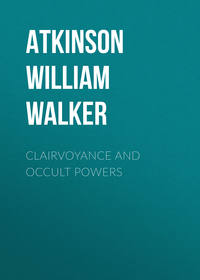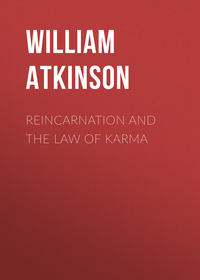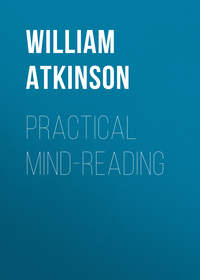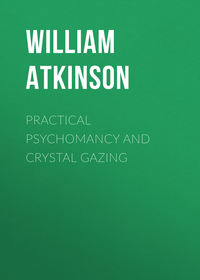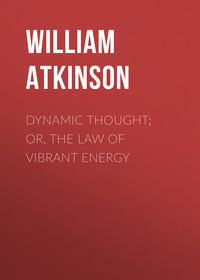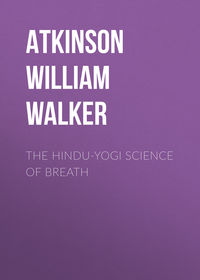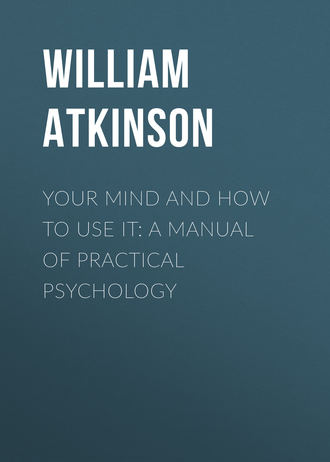
Your Mind and How to Use It: A Manual of Practical Psychology
It is needless to say that as judgments lie at the base of our thinking, and also appear in every part of its higher structure, the importance of correct judgment in thought cannot be overestimated. But it is often very difficult to form correct judgment even regarding the most familiar things around us. Halleck says: "In actual life things present themselves to us with their qualities disguised or obscured by other conflicting qualities. Men had for ages seen burning substances and had formed a concept of them. A certain hard, black, stony substance had often been noticed, and a concept had been formed of it. This concept was imperfect; but it is very seldom that we meet with perfect, sharply-defined concepts in actual life. So it happened that for ages the concept of burning substance was never linked by judgment to the concept of stone coal. The combustible quality in the coal was overshadowed by its stony attributes. 'Of course stone will not burn,' people said. One cannot tell how long the development of mankind was retarded for that very reason. England would not to-day be manufacturing products for the rest of the world had not some one judged coal to be a combustible substance. * * * Judgment is ever silently working and comparing things that to past ages seemed dissimilar; and it is constantly abstracting and leaving out of the field of view those qualities which have simply served to obscure the point at issue."
Gordy says: "The credulity of children is proverbial; but if we get our facts at first hand, if we study 'the living, learning, playing child,' we shall see that he is quite as remarkable for incredulity as for credulity. The explanation is simple: He tends to believe the first suggestion that comes into his mind, no matter from what source; and since his belief is not the result of any rational process, he cannot be made to disbelieve it in any rational way. Hence it is that he is very credulous about any matter about which he has no ideas; but let the idea once get possession of his mind, and he is quite as remarkable for incredulity as before for credulity. * * * If we study the larger child, – the man with a child's mind, an uneducated man, – we shall have the same truth forced upon us. If the beliefs of men were due to processes of reasoning, where they have not reasoned they would not believe. But do we find it so? Is it not true that the men who have the most positive opinions on the largest variety of subjects – so far as they have ever heard of them – are precisely those who have the least right to them? Socrates, we remember, was counted the wisest man in Athens because he alone resisted his natural tendency to believe in the absence of evidence; he alone would not delude himself with the conceit of knowledge without the reality; and it would scarcely be too much to say that the intellectual strength of men is in direct proportion to the number of things they are absolutely certain of. * * * I do not, of course, mean to intimate that we should have no opinions about matters that we have not personally investigated. We take, and ought to take, the opinion of some men about law, and others about medicine, and others about particular sciences, and so on. But we should clearly realize the difference between holding an opinion on trust and holding it as the result of our own investigations."
Brooks says: "It should be one of the leading objects of the culture of young people to lead them to acquire the habit of forming judgments. They should not only be led to see things but to have opinions about things. They should be trained to see things in their relations and to put these relations into definite propositions. Their ideas of objects should be worked up into thoughts concerning the objects. Those methods of teaching are best which tend to excite a thoughtful habit of mind that notices the similitudes and diversities of objects and endeavors to read the thoughts which they embody and of which they are the symbols."
The study of logic, geometry, and the natural sciences is recommended for exercise of the faculty of judgment and the development thereof. The study and practice of even the lower branches of mathematics are also helpful in this direction. The game of checkers or chess is recommended by many authorities. Some have advocated the practice of solving enigmas, problems, rebuses, etc., as giving exercise to this faculty of the mind. The cultivation of the "Why?" attitude of mind, and the answering of one's own mental questions, is also helpful, if not carried to excess. "Doubting Thomas" is not always a term of reproach in these days of scientific habits of thought, and "the man from Missouri" has many warm admirers.
CHAPTER XXIV
Primary Laws of Thought
IN connection with this subject we herewith call the attention of the student to the well-known Primary Laws of Thought which have been recognized as valid from the time of the ancient Greek logicians. These laws are self-evident, and are uncontradictable. They are axiomatic. Jevons says of them: "Students are seldom able to see at first their full meaning and importance. All arguments may be explained when these self-evident laws are granted; and it is not too much to say that the whole of logic will be plain to those who will constantly use these laws as their key." Here are the Three Primary Laws of Thought: —
I. Law of Identity. "Whatever is, is."
II. Law of Contradiction. "Nothing can both be and not be."
III. Law of Excluded Middle. "Everything must either be or not be; there is no middle course."
I. The first of these laws, called "The Law of Identity," informs us that a thing is always itself, no matter under what guise or form it is perceived or may present itself. An animal is always a bird if it possesses the general characteristics of a "bird," no matter whether it exhibits the minor characteristics of an eagle, a wren, a stork, or a humming bird. In the same way a whale is a mammal because it possesses the general characteristics of a mammal notwithstanding that it swims in the water like a fish. Also, sweetness is always sweetness, whether manifested in sugar, honey, flowers, or products of coal tar. If a thing is that thing, then it is, and it cannot be logically claimed that it is not.
II. The second of these laws, called "The Law of Contradiction," informs us that the same quality or class cannot be both affirmed and denied of a thing at the same time and place. A sparrow cannot be said to be both "bird" and "not bird" at the same time. Neither can sugar be said to be "sweet" and "not sweet" at the same time. A piece of iron may be "hot" at one end and "not hot" at another, but it cannot be both "hot" and "not hot" at the same place at the same time.
III. The third of these laws, called "The Law of Excluded Middle," informs us that a given quality or class must be affirmed or denied to everything at any given time and place. Everything either must be of a certain class or not, must possess a certain quality or not, at a given time or place. There is no other alternative or middle course. It is axiomatic that any statement must either be or not be true of a certain other thing at any certain time and place; there is no escape from this. Anything either must be "black" or "not black," a bird or not a bird, alive or not alive, at any certain time or place. There is nothing else that it can be; it cannot both be and not be at the same time and place, as we have seen; therefore, it must either be or not be that which is asserted of it. The judgment must decide which alternative; but it has only two possible choices.
But the student must not confuse opposite qualities or things with "not-ness." A thing may be "black" or "not black," but it need not be white to be "not black," for blue is likewise "not black" just as it is "not white." The neglect of this fact frequently causes error. We must always affirm either the existence or non-existence of a quality in a thing; but this is far different from affirming or denying the existence of the opposite quality. Thus a thing may be "not hard" and yet it does not follow that it is "soft"; it may be neither hard nor soft.
Fallacious ApplicationThere exists what are known as "fallacies" of application of these primary laws. A fallacy is an unsound argument or conclusion. For instance, because a particular man is found to be a liar, it is fallacious to assume that "all men are liars," for lying is a particular quality of the individual man, and not a general quality of the family of men. In the same way because a stork has long legs and a long bill, it does not follow that all birds must have these characteristics simply because the stork is a bird. It is fallacious to extend an individual quality to a class. But it is sound judgment to assume that a class quality must be possessed by all individuals in that class. It is a far different proposition which asserts that "some birds are black," from that which asserts that "all birds are black." The same rule, of course, is true regarding negative propositions.
Another fallacy is that which assumes that because the affirmative or negative proposition has not been, or cannot be, proved, it follows that the opposite proposition must be true. The true judgment is simply "not proven."
Another fallacious judgment is that which is based on attributing absolute quality to that which is but relative or comparative. For instance, the terms "hot" and "cold" are relative and comparative, and simply denote one's relative opinion regarding a fixed and certain degree of temperature. The certain thing is the degree of temperature, say 75 degrees Fahrenheit; of this we may logically claim that it is or is not true at a certain time or place. It either is 75 degrees Fahrenheit or it is not. But to one man this may seem warm and to another cold; both are right in their judgments, so far as their own relative feelings are concerned. But neither can claim absolutely that it is warm or cold. Therefore, it is a fallacy to ascribe absolute quality to a relative one. The absolute fact comes under the Law of Excluded Middle, but a personal opinion is not an absolute fact.
There are other fallacies which will be considered in other chapters of this book, under their appropriate heading.
CHAPTER XXV
Reasoning
REASONING, the third great step in thinking, may be said to consist of ascertaining new truths from old ones, new judgments from old ones, unknown facts from known ones; in short, of proceeding logically from the known to the unknown, using the known as the foundation for the unknown which is sought to be known. Gordy gives us the following excellent definition of the term: "Reasoning is the act of going from the known to the unknown through other beliefs; of basing judgment upon judgments; reaching beliefs through beliefs." Reasoning, then, is seen to be a process of building a structure of judgments, one resting upon the other, the topmost point being the final judgment, but the whole constituting an edifice of judgment. This may be seen more clearly when the various forms of reasoning are considered.
Immediate ReasoningThe simplest form of reasoning is that known as "immediate reasoning," by which is meant reasoning by directly comparing two judgments without the intervention of the third judgment, which is found in the more formal classes of reasoning. This form of reasoning depends largely upon the application of the Three Primary Laws of Thought, to which we have referred in a previous chapter.
It will be seen that if (a) a thing is always itself, then (b) all that is included in it must partake of its nature. Thus, the bird family has certain class characteristics, therefore by immediate reasoning we know that any member of that family must possess those class characteristics, whatever particular characteristics it may have in addition. And we likewise know that we cannot attribute the particular characteristics, as a matter of course, to the other members of the class. Thus, though all sparrows are birds, it is not true that all birds are sparrows. "All biscuits are bread; but all bread is not biscuit."
In the same way we know that a thing cannot be bird and mammal at the same time, for the mammals form a not-bird family. And, likewise, we know that everything must be either bird or not bird, but that being not bird does not mean being a mammal, for there are many other not-bird things than mammals. In this form of reasoning distinction is always made between the universal or general class, which is expressed by the word all, and the particular or individual, which is expressed by the word "some." Many persons fail to note this difference in their reasoning, and fallaciously reason, for instance, that because some swans are white, all swans must be so, which is a far different thing from reasoning that if all is so and so, then some must be so and so. Those who are interested in this subject are referred to some elementary text-book on logic, as the detailed consideration is too technical for consideration here.
Reasoning by AnalogyReasoning by analogy is an elementary form of reasoning, and is the particular kind of reasoning employed by the majority of persons in ordinary thought. It is based upon the unconscious recognition by the human mind of the principle which is expressed by Jevons as: "If two or more things resemble each other in many points, they will probably resemble each other in more points." The same authority says: "Reasoning by analogy differs only in degree from that kind of reasoning called 'generalization.' When many things resemble each other in a few properties, we argue about them by generalization. When a few things resemble each other in many properties, it is a case of analogy."
While this form of reason is frequently employed with more or less satisfactory results, it is always open to a large percentage of error. Thus, persons have been poisoned by toadstools by reason of false analogous reasoning that because mushrooms are edible, then toadstools, which resemble them, must also be fit for food; or, in the same way, because certain berries resemble other edible berries they must likewise be good food. As Brooks says: "To infer that because John Smith has a red nose and is also a drunkard, then Henry Jones, who also has a red nose, is also a drunkard, would be dangerous inference. Conclusions of this kind drawn from analogy are frequently dangerous." Halleck says: "Many false analogies are manufactured, and it is excellent thought training to expose them. The majority of people think so little that they swallow these false analogies just as newly-fledged robins swallow small stones dropped into their mouths."
Jevons, one of the best authorities on the subject, says: "There is no way in which we can really assure ourselves that we are arguing safely by analogy. The only rule that can be given is this: That the more closely two things resemble each other, the more likely it is that they are the same in other respects, especially in points closely connected with those observed. In order to be clear about our conclusions, we ought, in fact, never to rest satisfied with mere analogy, but ought to try to discover the general laws governing the case. * * * We find that reasoning by analogy is not to be depended upon, unless we make such an inquiry into the causes and laws of the things in question that we really employ inductive and deductive reasoning."
Higher Forms of ReasoningThe two higher forms of reasoning are known, respectively, as (1) inductive reasoning, or inference from particular facts to general laws; and (2) deductive reasoning, or inference from general truths to particular truths. While the class distinction is made for the purpose of clear consideration, it must not be forgotten that the two forms of reasoning are generally found in combination. Thus, in inductive reasoning many steps are taken by the aid of deductive reasoning; and, likewise, before we can reason deductively from general truths to particular ones we must have discovered the general truths by inductive reasoning from particular facts. Thus there is a unity in all reasoning processes as there is in all mental operations. Inductive reasoning is a synthetical process; deductive reasoning, an analytical one. In the first we combine and build up, in the latter we dissect and separate.
CHAPTER XXVI
Inductive Reasoning
INDUCTIVE reasoning is based upon the axiom: "What is true of the many is true of the whole." This axiom is based upon man's belief in the uniformity of nature. Inductive reasoning is a mental ladder by which we climb from particular facts to general laws, but the ladder rests upon the belief that the universe is governed by law.
The steps in inductive reasoning are as follows: —
I. Observation, investigation, and examination of particular facts or things. If we wish to know the general characteristics of the bird family, we must first examine a sufficient number of birds of many kinds so as to discover the comparatively few general characteristics possessed by all of the bird family, as distinct from the particular characteristics possessed by only some of that family. The greater the number of individuals examined, the narrower becomes our list of the general qualities common to all. In the same way we must examine many kinds of flowers before we come to the few general qualities common to all flowers, which we combine in the general concept of "flower." The same, of course, is true regarding the discovery of general laws from particular facts. We examine the facts and then work toward a general law which will explain them. For instance, the Law of Gravitation was discovered by the observation and investigation of the fact that all objects are attracted to the earth; further investigation revealed the fact that all material objects are attracted to each other; then the general law was discovered, or, rather, the hypothesis was advanced, was found to explain the facts, and was verified by further experiments and observation.
II. The second step in inductive reasoning is the making of an hypothesis. An hypothesis is a proposition or principle assumed as a possible explanation for a set or class of facts. It is regarded as a "working theory," which must be examined and tested in connection with the facts before it is finally accepted. For instance, after the observation that a number of magnets attracted steel, it was found reasonable to advance the hypothesis that "all magnets attract steel." In the same way was advanced the hypothesis that "all birds are warm-blooded, winged, feathered, oviparous vertebrates." Subsequent observation and experiment established the hypothesis regarding the magnet, and regarding the general qualities of the bird family. If a single magnet had been found which did not attract steel, then the hypothesis would have fallen. If a single bird had been discovered which was not warm-blooded, then that quality would have been stricken from the list of the necessary characteristics of all birds.
A theory is merely an hypothesis which has been verified or established by continued and repeated observation, investigation, and experiment.
Hypotheses and theories arise very frequently from the subconscious assimilation of a number of particular facts and the consequent flashing of a "great guess," or "sacred suspicion of the truth," into the conscious field of attention. The scientific imagination plays an important part in this process. There is, of course, a world of difference between a "blind guess" based upon insufficient data and a "scientific guess" resulting from the accumulation of a vast store of careful and accurate information. As Brooks says: "The forming of an hypothesis requires a suggestive mind, a lively fancy, a philosophic imagination that catches a glimpse of the idea through the form or sees the law standing behind the fact." But accepted theories, in the majority of cases, arise only by testing out and rejecting many promising hypotheses and finally settling upon the one which best answers all the requirements and best explains the facts. As an authority says: "To try wrong guesses is with most persons the only way to hit upon right ones."
III. Testing the hypothesis by deductive reasoning is the third step in inductive reasoning. This test is made by applying the hypothetical principle to particular facts or things; that is, to follow out mentally the hypothetical principle to its logical conclusion. This may be done in this way: "If so and so is correct, then it follows that thus and so is true," etc. If the conclusion agrees with reason, then the test is deemed satisfactory so far as it has gone. But if the result proves to be a logical absurdity or inconsistent with natural facts, then the hypothesis is discredited.
IV. Practical verification of the hypothesis is the fourth step in inductive reasoning. This step consists of the actual comparison of observed facts with the "logical conclusions" arising from applying deductive reasoning to the general principle assumed as a premise. The greater number of facts agreeing with the conclusions arising from the premise of the hypothesis, the greater is deemed the "probability" of the latter. The authorities generally assume an hypothesis to be verified when it accounts for all the facts which properly are related to it. Some extremists contend, however, that before an hypothesis may be considered as absolutely verified, it must not only account for all the associated facts but that also there must be no other possible hypothesis to account for the same facts. The "facts" referred to in this connection may be either (1) observed phenomena, or (2) the conclusions of deductive reasoning arising from the assumption of the hypothesis, or (3) the agreement between the observed facts and the logical conclusions. The last combination is generally regarded as the most logical. The verification of an hypothesis must be "an all-around one," and there must be an agreement between the observed facts and the logical conclusions in the case – the hypothesis must "fit" the facts, and the facts must "fit" the hypothesis. The "facts" are the glass slipper of the Cinderella legend – the several sisters of Cinderella were discarded hypotheses, the slipper and the sisters not "fitting." When Cinderella's foot was found to be the one foot upon which the glass slipper fitted, then the Cinderella hypothesis was considered to have been proved – the glass slipper was hers and the prince claimed his bride.
CHAPTER XXVII
Deductive Reasoning
WE have seen in the preceding chapter that from particular facts we reason inductively to general principles or truths. We have also seen that one of the steps of inductive reasoning is the testing of the hypothesis by deductive reasoning. We shall now also see that the results of inductive reasoning are used as premises or bases for deductive reasoning. These two forms of reasoning are opposites and yet complementary to each other; they are in a sense independent and yet are interdependent. Brooks says: "The two methods of reasoning are the reverse of each other. One goes from particulars to generals; the other from generals to particulars. One is a process of analysis; the other is a process of synthesis. One rises from facts to laws; the other descends from laws to facts. Each is independent of the other, and each is a valid and essential method of inference."
Halleck well expresses the spirit of deductive reasoning as follows: "After induction has classified certain phenomena and thus given us a major premise, we may proceed deductively to apply the inference to any new specimen that can be shown to belong to that class. Induction hands over to deduction a ready-made premise. Deduction takes that as a fact, making no inquiry regarding its truth. Only after general laws have been laid down, after objects have been classified, after major premises have been formed, can deduction be employed."


